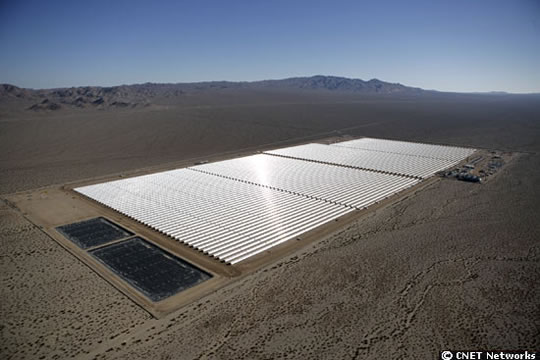By: Paul Calhoun
The US currently has about 700 megawatts of installed solar panel electricity generation connected to the grid, according to research by the consulting firm, Navigant. This represents less than 1% of all the electricity generated in the US.Each state controls the speed of solar adoption by heir independent policies. If these policies remain unchanged, generation from solar panels in the US, both commercial and residential generators are expected to grow to 6,000 megawatts by the year 2015.

Three thousand of the 6,000 megawatts will be generated in California. The incentive programs of California are the gold standard among supporters of solar power. Growth in the home solar-power market will not take off until more states adopt favorable net metering rules. The relaxed solar implementation can offset the cost of installing renewable power system and capture electricity that is being loss from the potential solar generation.
The Navigant report estimates that an additional 3,000 megawatts of solar panel electricity could be available in the next eight years if the states with solar implementation limitations lifted their caps.There are eight states that have no net-metering rules. These states are South Dakota, Kansas, Mississippi, Alabama, Tennessee, Florida, Arizona and my own state, South Carolina. A list compiled by New Energy Source lists California, New Jersey, Pennsylvania, and Maryland receiving the highest scores for solar adaptation with the remaining states of lower scores because of restrictive laws.
As of September 2007, 39 states had adopted some measures of rules to compensate consumers for sending self-generated renewable power to the grid. There is a lot behind the scenes that the states and power generation companies are willing to wage a serious fight to preclude Federal mandates to push solar renewable energy.In my state of South Carolina, the Santee Electrical Cooperative, which is owned by the state of South Carolina, is proposing a $998 million dollar coal burning generators. The site has been put on hold by the federal government for a deeper study of the environmental impact. Meanwhile, Santee continues the fight with their commissioned study. Their study concludes "$900 million in economic output, $500 million in earnings and 9,300 jobs for South Carolinians" Unfortunately; Santee made no attempt to study the environmental impact or what a combination of renewable/nonrenewable future actions would mean to the state.The federal renewable fuels bill has been stopped in the US Senate. Southern Co., American Electric Power Co. and other coal fired producers hired top Washington lobbyists, including Rudy Giuliani's firm, to help defeat a measure that would force them to boost electricity generated by wind, solar and other forms of renewable energy to 15 percent of the U.S. total by 2020. That's up from less than 2 percent today, and is a move the industry says would cost at least $67 billion. Southern Co. has spent $7.26 million this year lobbying Congress, more than Exxon Mobil Corp. or General Motors Corp., according to the Washington-based Center for Responsive Politics. It hired such firms as Bracewell & Giuliani LLP, where Republican presidential front-runner Giuliani is a partner. The bill would require utilities to obtain 2.75 percent of their power from renewable sources starting in 2010, ramping that up to 15 percent by 2020. Almost one-quarter of the mandate could be met by improving efficiency. Companies that fail to meet the standard would have to pay a penalty to the federal government. The cooperative of Southern Co and other generating companies consider this too high of a barrier and appear to have succeeded to remove the renewable fuel section from the bill going to President Bush.The average homeowner does not have a vote in adopting renewable fuels electrical generation standards. The battle is being conducted by the state and federal government and powerful electrical generating companies. The problem is that the average homeowner will be the big loser in this struggle. Our major recourse is to write our state and federal representative to adopt measure that we can utilize the potential cost savings and reduces pollution of solar generated electricity.Our letters to our government representatives should ask for means to:* Encourage greater renewable-energy generation * Promote customer-sited distributed generation (wind and solar fuels) * Reduce demand on an ever increasingly strained grid * Reward investment in renewable technologies * Facilitate energy independence * Improve air quality and public health * Promote in-state economic development.Most states that have revised their interconnection and net-metering policies have done so in pursuit of these same goals.Copyright (c) 2008 Paul Calhoun
I have a BS and MS in Metallurgical Engineering. Thirty six years spent in the development of semiconductors. Business experience in start up business plan. Currently, an oyster farmer and interested in helping the environment by deploying solar energy. Please visit my Web Site
http://www.charlestonenvironmentalhelp.com










